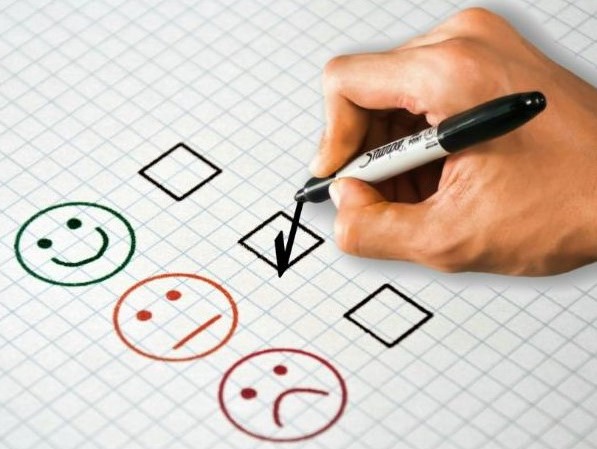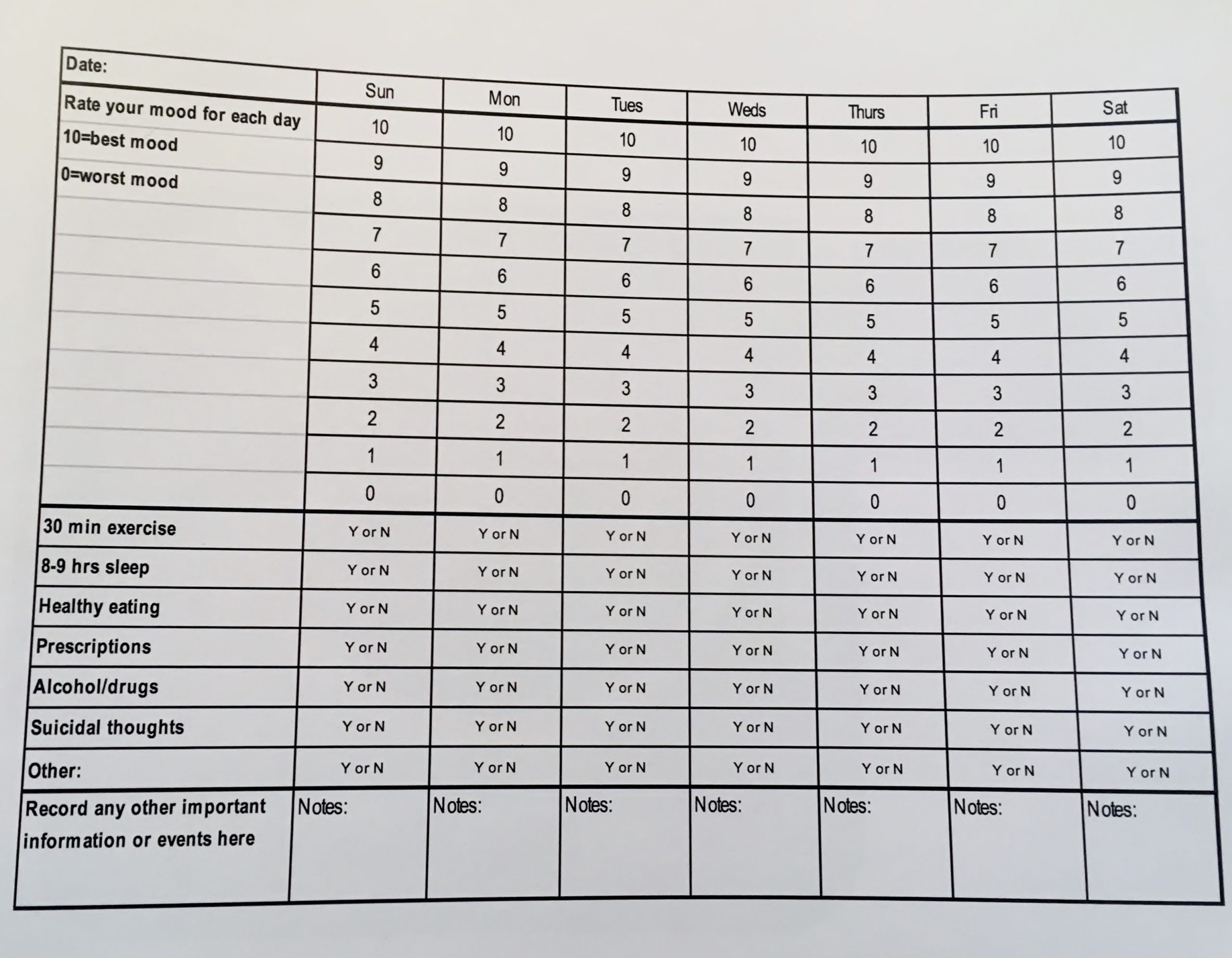Mood Maps

It only takes a few seconds each day to record significant events on a Mood Map. Doing so for several weeks will allow you to see how your daily experiences impact your mood, make necessary changes and then track your progress over the next few months. A mood is a relatively long lasting emotional state that generally is positive or negative. Moods are expressed indirectly by the ways people behave, communicate, think and view the world. Symptoms of a bad mood include lethargy, insomnia or oversleeping, negative self-talk and having difficulty communicating and/or processing thoughts.
To create a Mood Map, rate your mood (good, bad or indifferent), motivation and any anxiety you may feel on a scale of 1 to 5 for five periods during the day (9 a.m. to Noon, Noon to 3 p.m., 3 p.m. to 6 p.m., 6 p.m. to 9 p.m. and 9 p.m. to Midnight). Use the following scale: 1 – very bad/sad, 2 – bad /sad, 3 – ambivalent, 4 – good/happy and 5 – very good/happy. If you prefer, utilize faces like those in the picture above rather than a numerical scale. You also could use a simple print out like this.

Include notes on other symptoms you are experiencing and how long they last. The latter information is easy to forget yet helpful to share with your therapist at each session. Things to consider while completing your daily Mind Map are where you were, who you were with and exactly what you felt. You also can contemplate alternatives to what you did or how you responded. In reality, strong moods can indicate that something significant is occurring.
After a few weeks, look for patterns. When are you happy, sad or ambivalent? What were you doing just before or during a particular mood? Common triggers of bad moods are a lack of sleep or exercise, being hungry or eating junk food, caffeine and/or alcohol, dehydration and clutter. Strategize solutions, such as “I stay up too late looking at social medial so I will entice myself to go to bed earlier by reading a good book.”
Moods can be managed. Creating and using a Mood Map will allow you to better understand what you can and cannot control and evaluate your options for making changes and improving your mood and overall mental health.